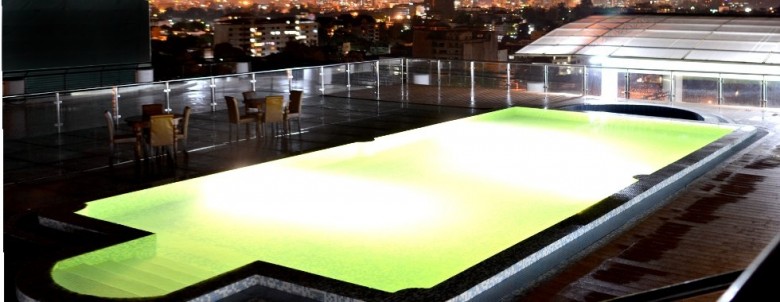Earlier this year — late February to be exact — I decided to join my brother Dybby and his daughter Lisa for skiing. To be a good skier, you have to ski often for as with all sports, it’s all about the practice. You do it so often it becomes second to your nature. I hadn’t skied in over three years and I was worried my legs wouldn’t be able to handle it. Dumb right? I had two good legs but the voice in my head was just dishing out all the worst things that could happen. Perhaps I would break a femur, be in crutches for months, limping and hopping about. Worse, I could hit my head, get in a coma anad I hadn’t gotten to the business of writing a will. What if I became brain dead? Would someone have to pull the plug. Holy cow, as you can see I was going off on a tangent and watched too many seasons of Gray’s Anatomy. I sat down quietly trying to slow down my over active imagination by reading a book. Wrong thing to do! Words like fall, leap, crack, head, injury, dead, leaped out in bold size 36 font before my eyes. I slammed the book shut and called my brother with some flimsy excuse. My brother is a guy who has contingencies for everything. He has plan A and B down and if C doesn’t work the other letters of the alphabet are there for him to work with. Nothing fazes him. So I dish out my flimsy ass excuse that is somewhat similar to the one Kevin Hart dishes out on his stand up. Money shouldn’t be an issue. I can always pay my brother back. I sit there chewing my lip wondering how to get out of this trip.
Shucks! I was off work and I had precisely kept the day open for this ski session with my bro and niece, sort of a bonding session and here I was trying to bail out. Then my brother said something that later bothered me. He said it’s up to me if I wanted to join the ski trip, then he reminded me I had done this last year. You know, the bailing out last minute thing. I honestly didn’t remember about the previous year. I must have had a hot date or something. My brain is not the foggy kind but I do remember something “important” had come up.
Oh well, I have never been known to be a quitter. So I texted my brother told him I would see him on Saturday. “Bring those damn skis, I got this!” I told myself.
“What’s the worst that could happen?”
Saturday morning, I was all suited up in my ski pants, warm gloves, beanie and my red North Face jacket. I was armored against the cold. I found my brother packing our lunch and I had brought some snacks as well. Twenty minutes later, we were on our way to the Liberty Ski Resort.
Liberty resort is a good two and a half hours away. I distracted myself by gazing outside as the trees and houses passed, chatting with my brother, asking Lisa about school and some other random small talk. Inside my head, no small talk was going on. It was a full blown pandemonium, a ruckus that got my poor heart racing like I had just finished a 100 meter dash. I took small steady breaths to calm myself — a trick I had learnt during my high school performance days. Nerves can be a tricky thing.
As we arrived at the resort, you could feel the excitement and thrill of the other skiers and snowboarders. It was palpable. It felt like everyone and their mothers were there. Kids of all ages suited up looking like mini tele-tubbies, tagging along their parents. The snowboarders hoisting up their boards chatting aimlessly, marching towards the slopes. A group of teenagers in skittle colored pants and jackets and fancy reflecting sunglasses on their helmets were in a deep discussion probably about the Walking Dead or Snapchat or whatever teens talk about nowadays. Signs all over the place aided this happy ski-ready mob to whatever destination they required.
We joined the line, registered, signed up and signed away our lives. The damn fine print be damned. We then attached the lift pass tickets on our pants and jackets respectively. The ticket allows you to use the lifts in the ski area. I was still thinking I could still get out of this. My niece who was beyond eager to get this party started was ten seconds short of tapping her toes. There was no way I was going to balk in front of my brother with my lovely niece looking up to me. Nope. We got on our Ski boots, which weighed a ton. They were as heavy as five bricks. Then picture strapping them on your feet and having to walk towards the slopes with your skis, ski poles and full regalia. It is a waddle of some sort, like a pig that ate too much.
We grabbed our skis and helmets and joined the rest world out on the slopes. That’s when I stared panicking. My hurt started beating, and I saw myself being rushed to the ER. My brother was putting on his headphones while my niece was joining the snowboarders. I was rooted to the ground as if a first grader on her first day at school. My brother looked up and noticed the uncertainty on my face. He asked if I was ok.
I gulped and told him that I was nervous and a little bit afraid. Then he said you have done this before, it won’t be too bad. “Just remember the basics.”
What I was about to embark on was Alpine skiing which is common in most Ski resorts. It’s going down slope. The basics involved making the pie with your skis, a nice acute angle now and then when skiing. The skii tips should be slightly kissing each other or just about to. If your skiis are parallel to each other, bend your knees and let gravity take care of the rest. If you need to slow down, create the pie. The pie was your brakes pretty much. The heel and toe of a ski boot should be firmly secured to a ski. In a nutshell my friends, that is skiing 101. The rest you learn as you go.
My brother hit the line to get to the swing chairs that would get him up the slopes. My niece was off to the opposite direction for a snowboarding session. Then there I was, standing on slushy ice crystals holding my skis, rocking heavy, uncomfortable shoes, in bloody cold weather.
It was now or never.
I got my music playlist ready, put on my headphones and marched towards the slopes. I put my skis down, stepped on them until my boots clicked. I felt so uncertain at first, like I was defying gravity. My helmet and fancy ski sunglasses were already on. Dybby had already had his first moment on the slopes and was ready for his second round. I was lazing around enjoying the tunes while I tried to pass time acting like I was doing an important task. He found me shuffling like an old lady with my skis — awkward and uncoordinated.
Nevertheless, I lined up on the lift pass, sat on the swing chair ready to tackle what seemed like a mini-hill. It would serve as my warm-up. I won’t lie, I was frightened, I hadn’t done this in aeons but I let my music soothe me into calmness. I was sitting quietly with two other ladies on the lift chair watching the lift go up, while the skiers below looked like tiny ants.
This mini-hill was slowly turning into Mount Everest. As we were getting closer to the top the lady at the end of our chair looked at us and asked if we were ready. I remember giving her that fake smile that doesn’t reach the eyes. A hesitant smile. A smile that did a poor job at smearing the trepidation off my face. If she would have looked deep into my eyes, the eyes would have told her so. But she didnt, she was getting ready to slide off the chair holding onto her poles.
Getting off the ski lift requires immaculate execution. All three occupants have to get off at the same time without tangling each other’s skis or boards. A little mishap can cause everyone to tumble down on the snow, compelling the ski lift operator to pause the lift so that everyone is back on their feet and the world is safe again. You might endure unfriendly side-eyes if you caused the mishap. My main goal was to ensure that I didnt fall as we got ready to get off the chair. Or tumble down the snow, period! I had endured that stage with some forbearance and at times, utter mortification during my initial ski lessons years ago. I told myself if I could accomplish that, then am sure the rest would go smoothly. I believe in domino effects, ok?
The lift got us off, and I slid down gracefully and made a stop. My partners looked A-okay too. Great, the first hurdle was over. I smiled at them, fixed my gloves, adjusted my headphones then checked to make sure my ski sunglasses were positioned correctly on my helmet and stable on my nose bridge. Any reservations I had earlier had completely disappeared.
I was ready to hit the slopes. Bring it on bad boy.
I secured a spot and used my poles to drive me forward, and down the slope I went. Boy oh boy. The rush that I had was beyond amazing. My skis felt as if they were bouncing softly in the white powder. I watched the panoramic views all around me as I carved the slopes. The views were spectacular from the top. My adrenaline was rushing, my heart was racing and I could feel the chill of the wind on my face as I sped down the mountain. I was skiing and gracefully at that. I made neat small curves behind me, which I would watch with pride. Those curvy imprints in the snow made me feel like I was leaving all my doubts, worries and cares behind with every foot of the mountain I had conquered. I felt like belting the eye of the tiger. As I got closer to the bottom of the mountain, I remembered the pie and veered off slowing down and came to a stop. I had done it. I turned back and looked at the slopes, then burst out into a smile. No a grin. I felt like laughing. I believe I did. I adjusted my gloves once again. The warm-up was done. I skied back to the lines by the lift chairs. By the end of that day I had tackled insane slopes that made you feel like toppling over by just looking at them. And, I never fell.
Here in lovely New York City, the cold wind is already in our midst, and summer is now an afterthought. I felt it straight through my bones this past weekend. It made me tear up, not because it moved me in any emotional way but at how cold it was. So cold it had me sniffling and tearing up as if I was watching “The Notebook.” Today’s post is not about the weather or the slopes or how to ski. It’s about tackling fears. That thing that stops us from being great or discovering our potentials. There comes a time where you will need to tackle your worst fears. Fears buried so deep that they seem to weigh you down, make you immobile. The truth about these fears, most of the time, are a result of your imagination. As humans we have an high inclination to focus on the negative. Give someone a compliment a thousand times, yeah, yeah! Critic them once, they remember it for a lifetime. That is why I think fear is the main reason why alot of thing’s don’t get done. Fear of the unknown, fear of change, fear of new experiences, fear of being wrong, fear of being fearful, fear of… the list goes on. I remember the fear that almost choked me up going up those slopes. The time I created all sort of scenarios. I was building walls that would only confine me. If I had listened to the voice in my head, I would be seated in the cozy resort reading a book while watching the skiers go down the slopes smiling and high-fiving each other. I would have missed out on the experience. The chance to immerse myself into the unknown and learn something totally new.
The same thoughts are in my mind at the moment. New city, new friends, new roommates, new workmates, new lifestyle: everything is new. I feel like I am starting all over again. It is a little bit nerve-wracking and daunting at times but I remind myself that the days I am most uncomfortable are the days I learn most about myself. About what I am capable of. This, my dear friend, is quite a revelation. When the lady on the lift chair asked us if we were ready, I didn’t know it would be a question that I would hear over and over again. Are you ready? I got asked this question so many times before I moved to New York City. The truth is you will never be ready. I think being ready is like waiting for the perfect moment, the perfect weather or the perfect scenarios. If you keep waiting, you will let opportunities pass you by. You can only grow if you’ feel awkward and uncomfortable when you try something new. Plunge into whatever you think you can not do. Fear be damned! Seize the day. You will come out of that experience, exhilarated, pumped, super happy, wondering why you never did it in the first place. So whenever you find yourself doubting how far you can go, just remember how far you have come. Remember everything you have faced, all the battles you’ve won and all the fears you have overcome. Go tackle your own slopes. Do not be afraid to fall — that is how you learn in the beginning, and don’t forget to enjoy the ride. It’s exhilarating!
Thanks for stopping by.

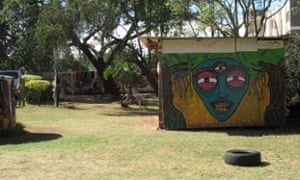
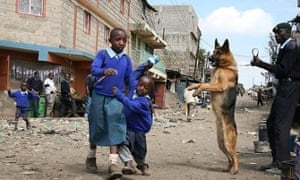





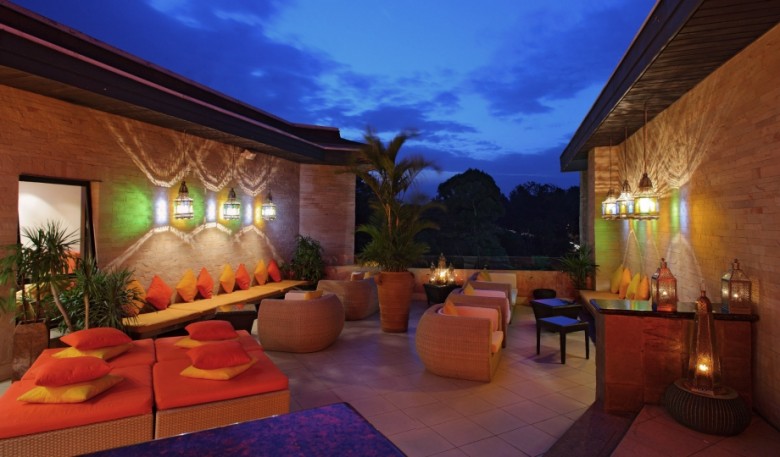 The Nest, located at Tribe hotel’s top floor is another amazing spot to spend your evening. The Nest comes highly recommended from those who frequent it, with a wide selection of food and drinks available at fair prices. Shisha is available and the martinis at the NEST are arguably the best. The exclusivity makes it a great place to host parties for small groups. Visit:
The Nest, located at Tribe hotel’s top floor is another amazing spot to spend your evening. The Nest comes highly recommended from those who frequent it, with a wide selection of food and drinks available at fair prices. Shisha is available and the martinis at the NEST are arguably the best. The exclusivity makes it a great place to host parties for small groups. Visit: 

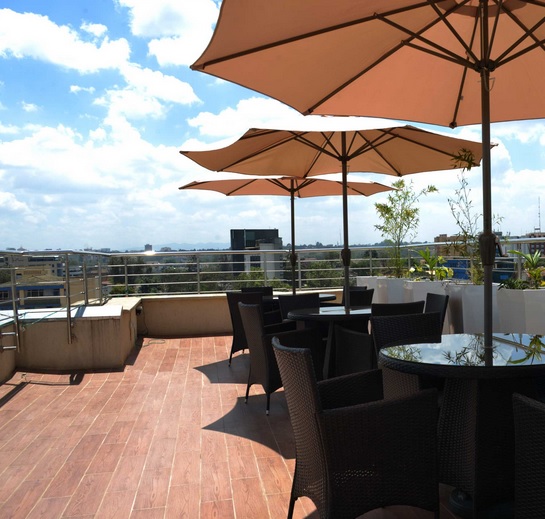
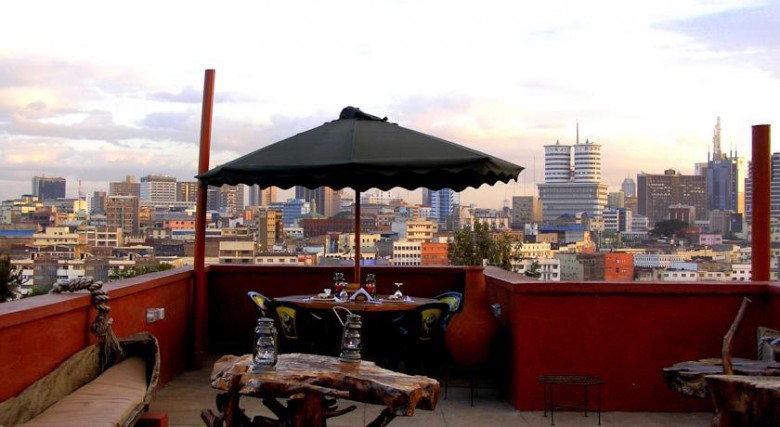 Khweza Bed and Breakfast is located on Ngara road and it has a modest rooftop bar and restaurant that is frequented by locals. There are great views of the city from the rooftop and a wide range of food and drinks can be enjoyed while there. Visit:
Khweza Bed and Breakfast is located on Ngara road and it has a modest rooftop bar and restaurant that is frequented by locals. There are great views of the city from the rooftop and a wide range of food and drinks can be enjoyed while there. Visit: